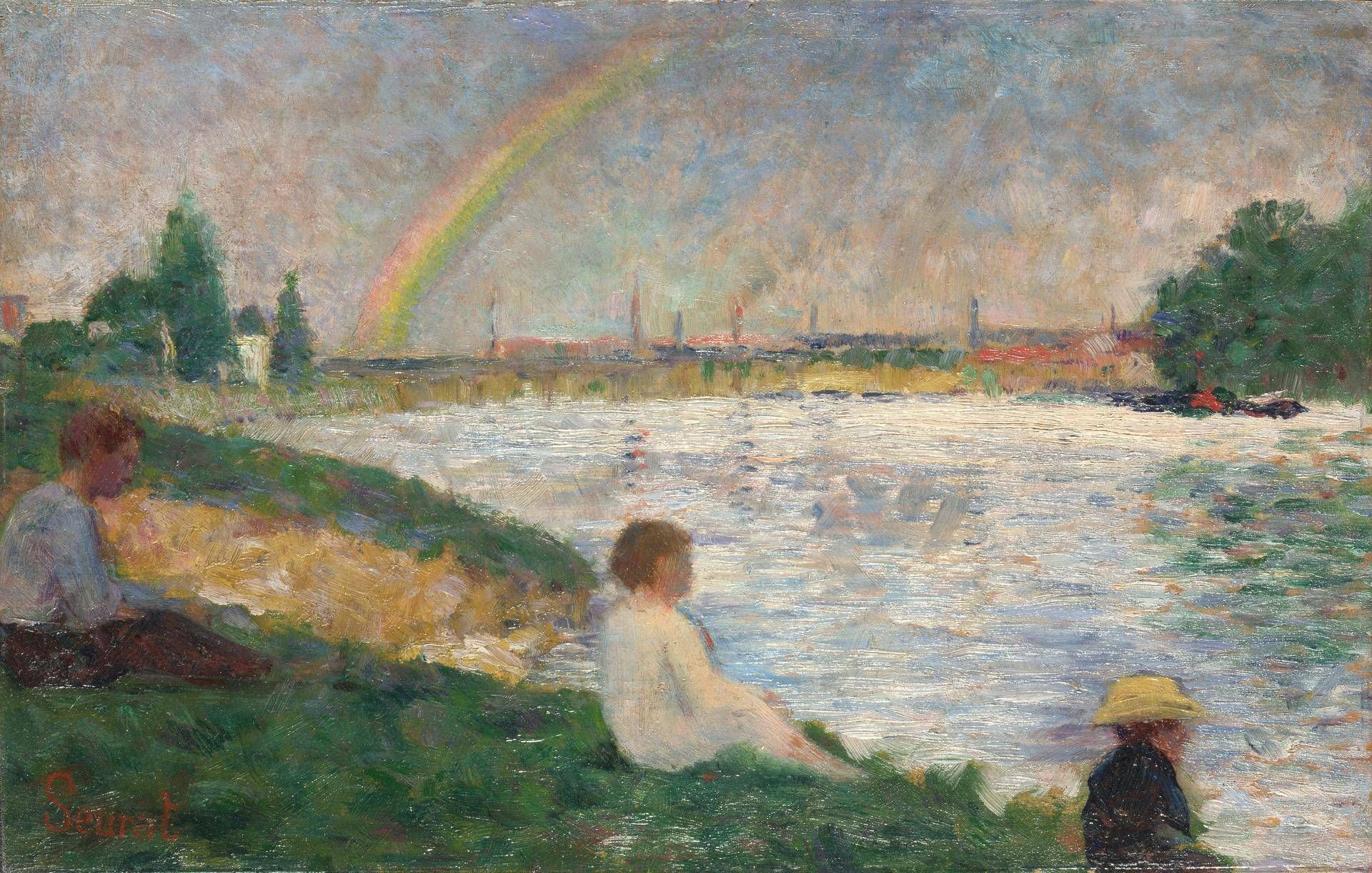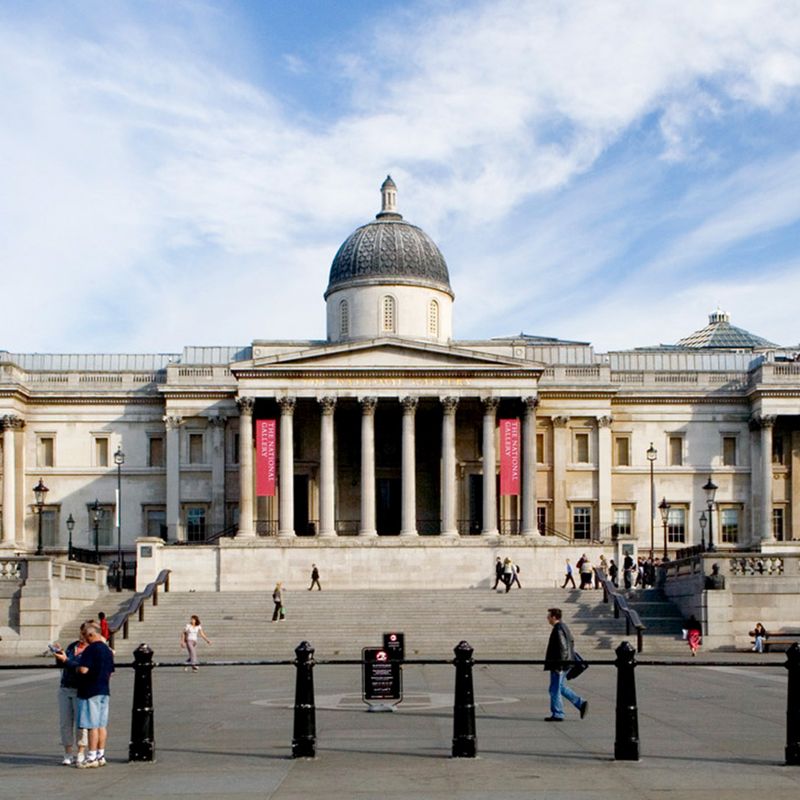
The Rainbow: Study for 'Bathers at Asnières'
This is one of the Studies for Bathers at Asnières in the National Gallery's collection that relate to Seurat's monumental picture Bathers at Asnières (1883-4). In the early 1880s Seurat often drew and painted along the river Seine at Asnières, which was to be the location for the large picture. We cannot be certain that this small oil sketch was a preparatory study for that painting or whether the conception of the Bathers emerged from the sketches Seurat made along the Seine. However, as both the location (the river bank facing the island of La Grand Jatte with the factories at Clichy on the horizon) and the sequence of male figures all facing the same direction also feature in the final picture, this may be one of the earlier studies for it.
The picture looks as though it was at least partly painted on site, rather than in the studio. The black barges on the right and building in the background, depicted with just a few swift strokes, may have been painted directly on location. However, this is more developed than a quick sketch as it shows signs of having been composed rather than simply observed. The three figures appear to have been deliberately placed within the landscape. The man on the far left, for example, may have been painted from life, but his head, upper torso and legs each relate to a different band of the landscape behind him. His torso is aligned with the sandy gully formed by dragging boats in and out of the river and which was also used for bathing horses and dogs - the source of the title Une Baignade ('a bathing place'), by which painting has sometimes been known. An unbroken shallow diagonal, which echoes the line of the riverbank, also descends from his head through the heads of the other two figures. There is equal space between the three and their poses (sitting up with their arms resting on their legs stretched out before them) are the same.
This is the only sketch to include a rainbow, which was painted over the sky once the paint had dried. Although perhaps a rather contrived image, the mottled sky suggests that Seurat may have seen a rainbow and it is evidence of his attention to particular effects of light and atmosphere throughout the sketches - and in the final painting, with its effect of hazy morning sunshine. Seurat pays the same attention to the river, and the long horizontal strokes and the darker tones for the water closest to us also appear in the finished picture.
Credit: Presented by Heinz Berggruen, 1995
1883
Oil on wood
15.5 x 24.5 cm
NG6555
Image and text © The National Gallery, London, 2025
Where you'll find this

National Gallery
Permanent collection





